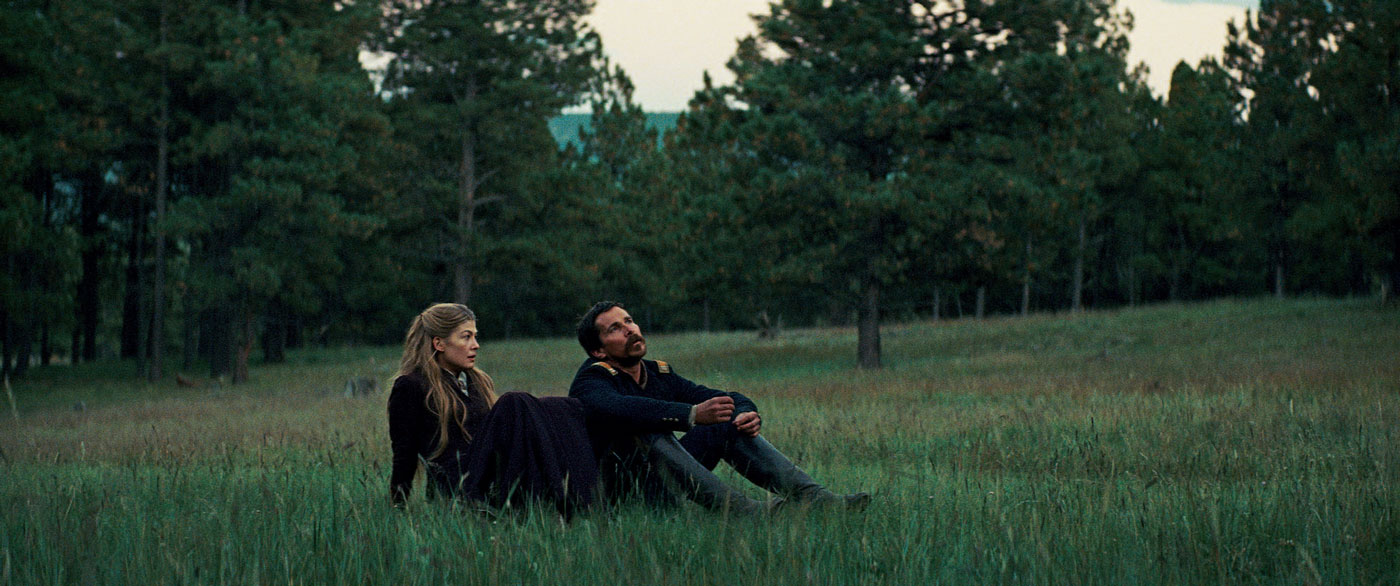
Hostiles, Wind River, Godless, and more help usher in a fresh era of prestige for the classic genre.
After viewing the first episode of Godless, writer-director Scott Frank’s acclaimed Netflix miniseries, filmmaker Jared Moshe immediately offered high praise for the program via Twitter and exclaimed: “What a time to be a western fan!”
Yes, indeed. Moviegoers and TV viewers who appreciate westerns — both traditional and contemporary — currently are enjoying, if not a new golden age, then a welcome renaissance.
Consider: Hostiles, writer-director Scott Cooper’s gritty drama about a seasoned and cynical Army captain ordered to escort a dying Cheyenne war chief and his family back to their ancestral home, has earned high praise for its unsentimental view of opposing cultures, and for Christian Bale’s masterful performance as a veteran Indian fighter driven to reconsider his prejudices. Wind River, writer-director Taylor Sheridan’s modern-day drama about a murder investigation near a Wyoming Indian reservation, played well with audiences and figured prominently on many critics’ 2017 Top 10 lists. Filmmaker Chloé Zhao artfully intertwined fact and fiction in The Rider, her award-winning drama-documentary hybrid about a Native American rodeo competitor facing the potentially fatal consequences of pursuing his career. Westworld is set to return for a second season on HBO, as is The Son on AMC.
Coming soon to a theater or home screen near you: The Kid, an ambitious directorial effort, by actor Vincent D’Onofrio featuring up-and-comer Dane DeHaan (Valerian and the City of a Thousand Planets) as the notorious Billy the Kid; Yellowstone, the Paramount Network’s contemporary drama starring C&I reader favorite Kevin Costner as John Dutton, who controls the largest contiguous ranch in the United States; The Sisters Brothers, award-winning filmmaker Jacques Audiard’s first English-language feature, a darkly comic western starring Joaquin Phoenix (Walk the Line) and John C. Reilly as gunmen ordered by their fearsome boss (Rutger Hauer) to kill a troublesome prospector (Jake Gyllenhaal); and The Ballad of Buster Scruggs, a Netflix anthology series written, directed, and produced by Joel and Ethan Coen (who gave us the True Grit remake), featuring Tim Blake Nelson, James Franco, Tyne Daly, Zoe Kazan, and other notables in a variety of Wild West tales.
Of course, some purists are bound to complain that none of these newfangled concoctions would qualify as an old-fashioned, Saturday matinee-style shoot’em-up. Indeed, there is a pronounced sense of moral ambiguity in movies like Hostiles and Wind River. And compared to the sagebrush sagas of yesteryear, the language is saltier and the violence more detailed in Ti West’s In a Valley of Violence, Jon Cassar’s Forsaken, Antoine Fuqua’s 2016 remake of The Magnificent Seven, and most other recent westerns.
Still, filmmakers such as Moshe display considerable respect for the genre as they tip their Stetsons to the archetypes and conventions that define classic westerns. In Dead Man’s Burden (2012), his directorial debut, Moshe generated palpable suspense with his fresh take on a familiar narrative about violent clashes over a frontier homestead. (Chief among those caught in the crossfire: Clare Bowen of TV’s Nashville.) And with The Ballad of Lefty Brown, his 2017 feature now available on various home screen platforms, he stakes fair claim on being a master of the genre with his solidly crafted and impeccably acted drama starring Bill Pullman in the title role as the grizzled sidekick of a Wild West legend (Peter Fonda) who must stand on his own and go gunning for justice when that legend is killed.
“For me,” Moshe says, “Lefty is a lot like Walter Brennan in Rio Bravo. Think about it: He’s played for comedy. The audience laughs at him, the other characters laugh at him, everyone laughs at him. He’s a joke, right? But he’s also the person who John Wayne puts in the jail cell to guard the prisoner, and is the last line of defense. In case it all goes wrong, it’s Walter Brennan who has to take care of it.
“Why do you have this character who is both someone we see as a joke, but also someone John Wayne trusts with a very important task? Trying to figure that out, that sort of dichotomy, is really what inspired me to write this story.”
Will Moshe follow with a third western? Maybe, maybe not. But he firmly believes other filmmakers will also want to keep the genre alive because of its defining qualities.
“I think it’s kind of the myth of America,” Moshe explains. “It’s how we define ourselves so much as a people. It’s this place where myth and history meet, and form the understanding of our identities of who we are as a country. That sense is so ingrained in us.
“And yet, we also realize how brutal and violent and dark it was back then. I’ve sort of been drawn to that world because I love playing with history and mythology, and how they’re both things that help us identify who we are individually, and who we are as a culture. It gives our culture a sense of purpose. All our sense of good and bad sort of stems from there.”
From the February/March 2018 issue.














